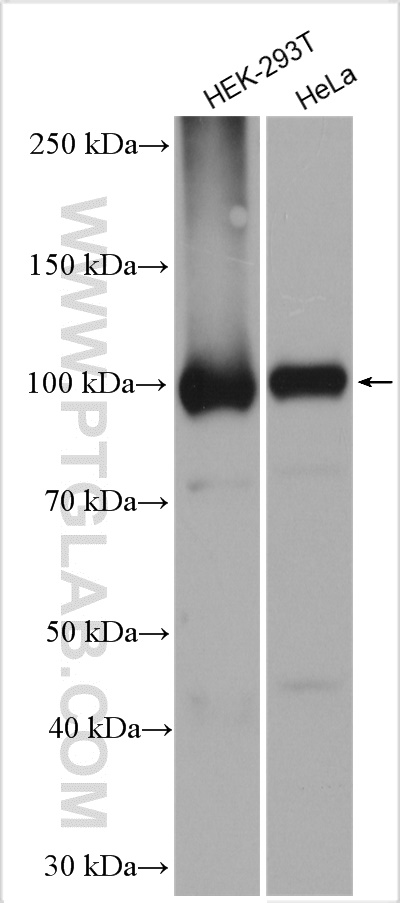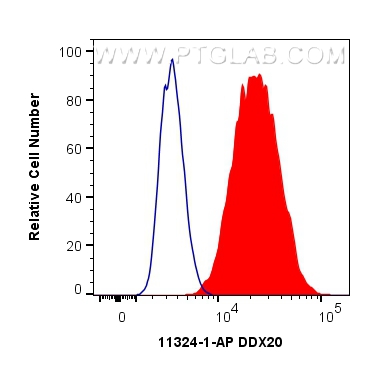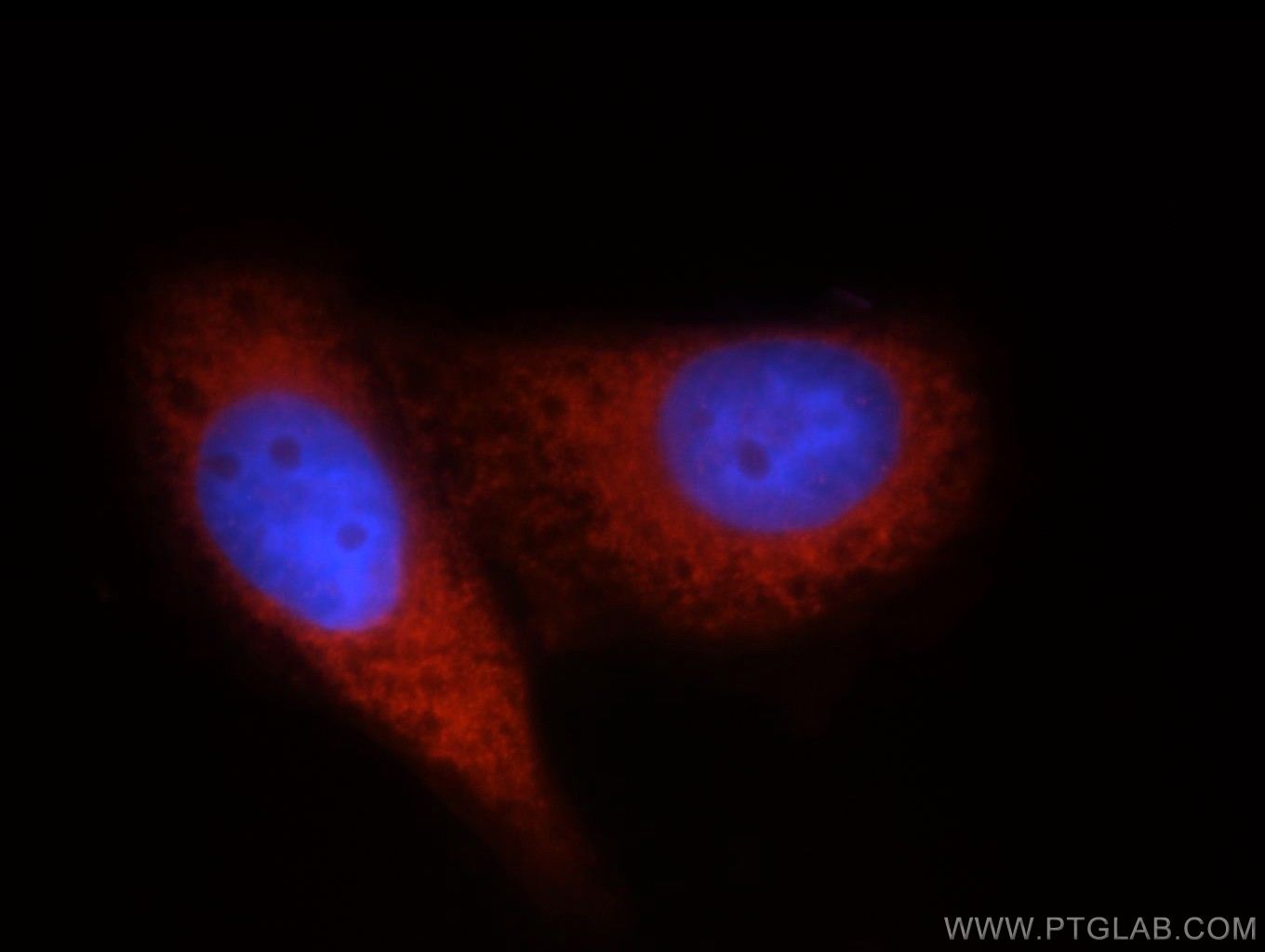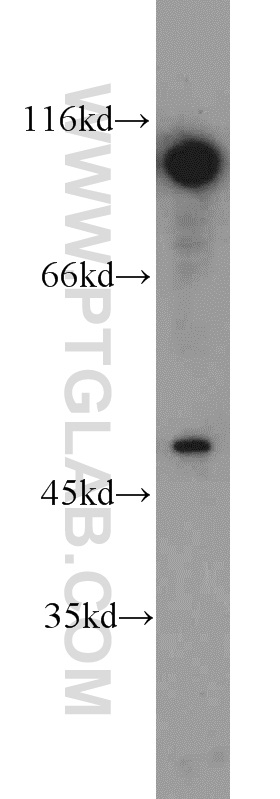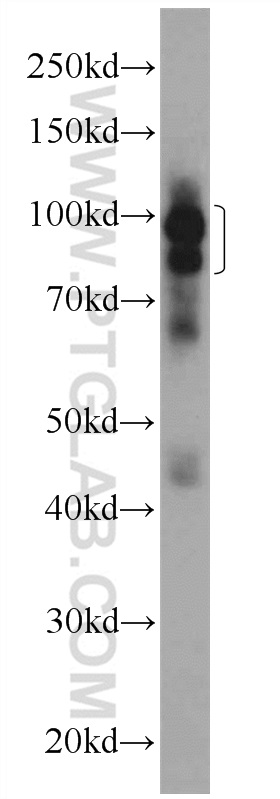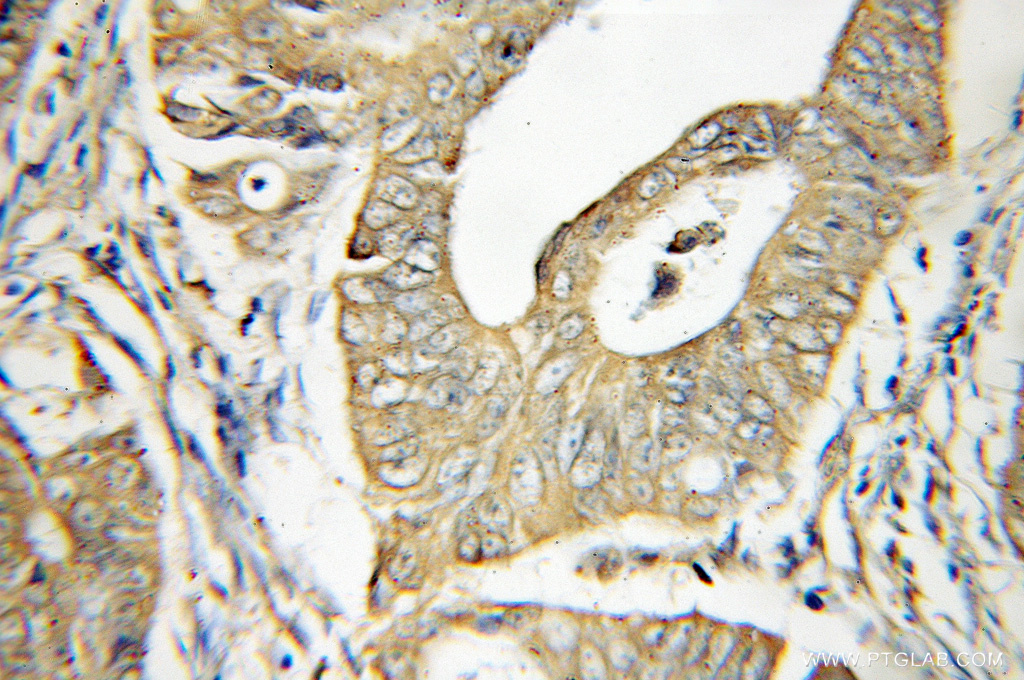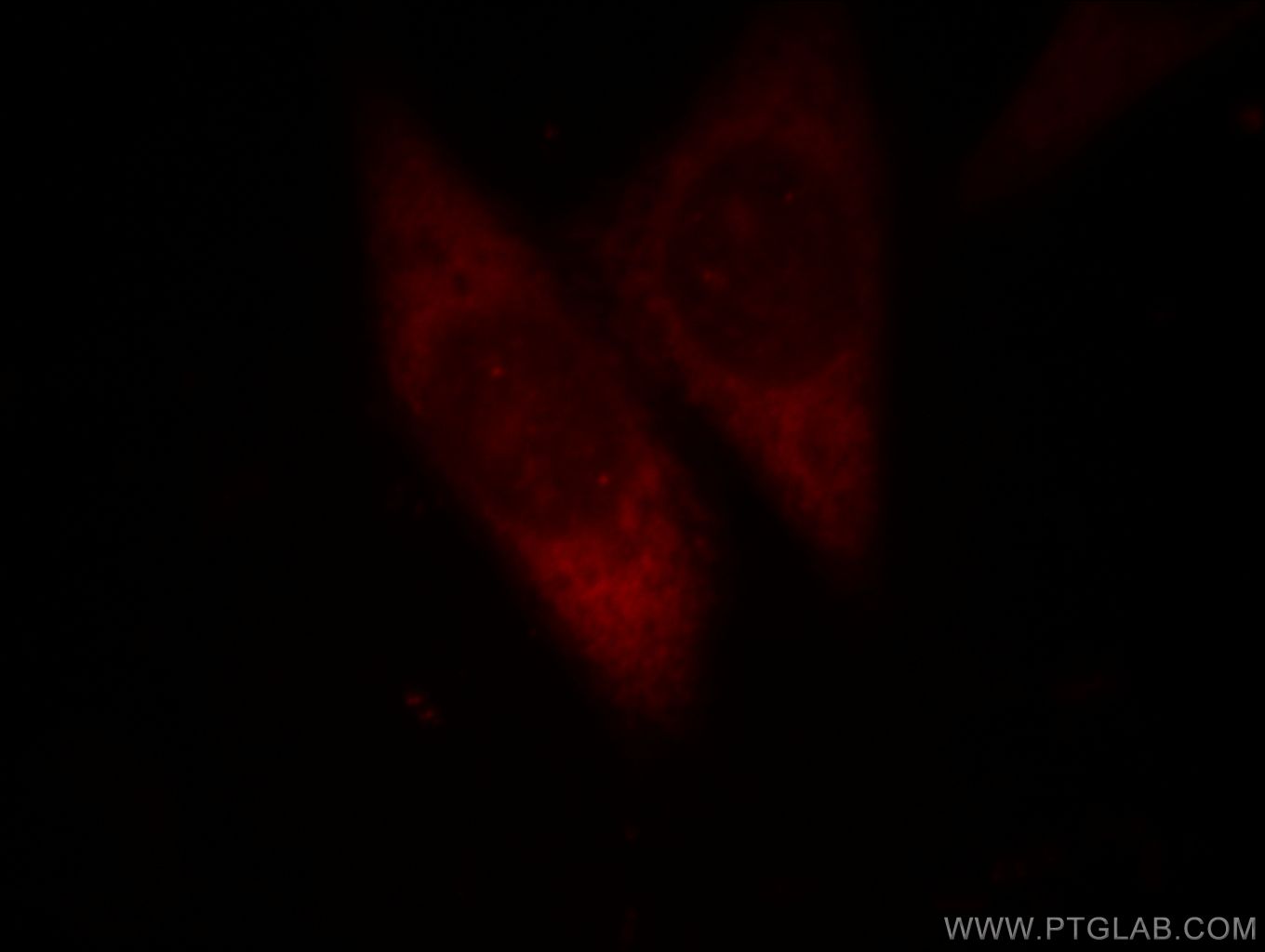验证数据展示
产品信息
11324-1-PBS targets DDX20 in WB, IHC, IF/ICC, FC (Intra), IP, Indirect ELISA applications and shows reactivity with human, mouse samples.
| 经测试应用 | WB, IHC, IF/ICC, FC (Intra), IP, Indirect ELISA Application Description |
| 经测试反应性 | human, mouse |
| 免疫原 | DDX20 fusion protein Ag1863 种属同源性预测 |
| 宿主/亚型 | Rabbit / IgG |
| 抗体类别 | Polyclonal |
| 产品类型 | Antibody |
| 全称 | DEAD (Asp-Glu-Ala-Asp) box polypeptide 20 |
| 别名 | |
| 计算分子量 | 824 aa, 92 kDa |
| 观测分子量 | 100 kDa |
| GenBank蛋白编号 | BC011556 |
| 基因名称 | DDX20 |
| Gene ID (NCBI) | 11218 |
| RRID | AB_2092401 |
| 偶联类型 | Unconjugated |
| 形式 | Liquid |
| 纯化方式 | Antigen affinity purification |
| UNIPROT ID | Q9UHI6 |
| 储存缓冲液 | PBS only , pH 7.3 |
| 储存条件 | Store at -80°C. The product is shipped with ice packs. Upon receipt, store it immediately at -80°C |
背景介绍
DEAD (Asp-Glu-Ala-Asp) box polypeptide 20 (DDX20), also known as DP103 or Gemin3, is a member of the DEAD box protein family expressed ubiquitously. DEAD family proteins use energy from ATP hydrolysis for RNA chaperoning and RNPase activity (PMID: 27121695). As a core member of the survival motor neuron (SMN) complex, DDX20 participate in small nuclear ribonucleoprotein (snRNP) biogenesis. Second, DDX20 have direct roles in gene expression in view of its implication in transcription and post-transcriptional gene silencing. Addition, the false expression of DDX20 could have deleterious effects on cellular homeostasis thus leading to cancer development and progression (PMID:29523774). Anymore, DDX20 could be identified as a biomarker and metastasis-driving oncogene of human breast cancer (PMID: 25083991). The detected weight of DDX20 is slightly higher than the theoretical molecular weight that is because of phosphorylation after translation.
